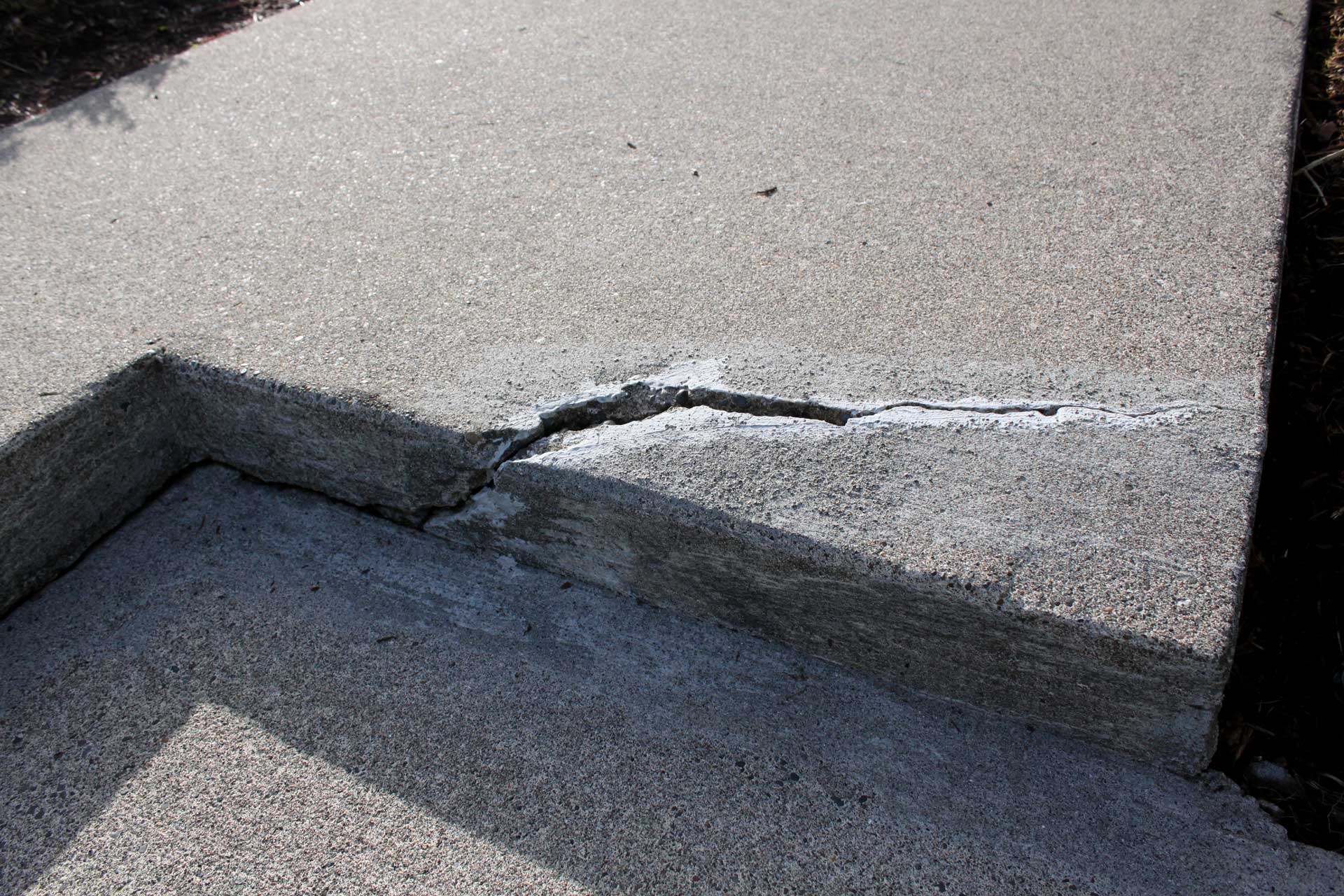Cracked Concrete: Should You Repair or Replace?
Are you seeing cracks in your concrete? You may have noticed them on your concrete garage floor, driveway or patio. Should you attempt to fix these cracks yourself? Is it time to replace the concrete?
Broken, cracked concrete can cause leaks and structural damage. Find out how to keep it solid and secure.
What Causes Cracks in Concrete?
Contraction. During temperature fluctuations, concrete can contract and expand. This is particularly common after a freeze-and-thaw cycle. Contraction is the most common cause of concrete cracks.
Excess weight. Putting too much weight on a concrete structure can cause it to buckle. Concrete is extremely strong, but every structure has its limit.
Improper installation. Installing concrete improperly can make it susceptible to cracking. When contractors install concrete in hot weather, rapid drying can cause it to crack.
When Is a Repair the Best Option?
In most cases, a repair job is all you need to restore the look and durability of your concrete. Repair is preferable to replacement for several reasons:
- It costs less.
- It’s more environmentally friendly.
- It takes less time.
- New products and techniques make the repairs strong.
- Your contractor can add surface finishes that make the repaired area look new.
Can You Fix It Yourself?
If your concrete has one or two small cracks, you can repair them yourself. If you’re seeing extensive cracking and the damage appears widespread, your best option is to call a professional contractor.
How to Fix Concrete Cracks
You will need concrete filler, a cold chisel, a hammer, and a stiff brush. You may also need a sealer.
1. Begin by using the cold chisel to cut the crack into a clean, even break.
2. Use the hammer and chisel to cut into the concrete at an angle. The crack should be bigger at the bottom than it is at the surface.
3. Use your stiff brush to sweep the area clean.
4. Pour the concrete filler into the cracks. Use a trowel to make it smooth.
5. Let the filler cure overnight. In the morning, apply a sealer to protect the concrete.
When to Call a Contractor
If the surface of your concrete is pitted or chipped, call a contractor. It won’t need replacement, but it will need a professional repair job. Surface pitting is called delamination. In most cases, a contractor can use concrete resurfacing to restore the texture and integrity of your concrete.
If the cracks are all over the concrete, it may be too big and time-consuming a job for you to do correctly. An experienced concrete contractor can take care of it safely and quickly.
Large, deep cracks could also be a sign that a surface repair won’t work.
When Is Replacement the Best Option?
If the concrete is breaking down to the subbase, you have a more serious problem on your hands. In that case, you must remove that part of the concrete, replace the subbase and replace the concrete.
Replacing concrete is a major undertaking in terms of time and expense, but sometimes it’s the only option.
Call the Concrete Masonry Experts
If your concrete is pitting, cracking or otherwise looking worse for wear, call Last Call Exteriors. We can give you a complete assessment, suggest repairs and return your concrete to a solid, smooth condition. Cracks in concrete only get worse if you ignore them, contact Capital Masonry today.
